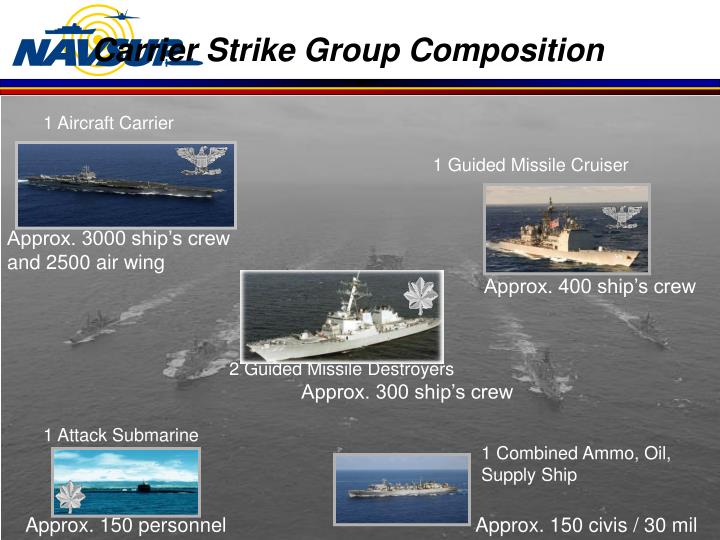
Its Carrier Air Wing (CVW) will consist of up to 24 F-35B Lightning II multirole fighters by 2023. The Queen Elizabeth-class aircraft carriers are designed to carry around 40 aircraft but can carry up to 72 at maximum capacity. Overseas, the UK has established a number of naval facilities to support the UKCSG, including the naval base HMS Jufair and the UK Joint Logistics Support Base, which are located in Bahrain and Oman, respectively. Additionally, escorts and support ships may be provided by allies. Currently, Fort Victoria is the only ship capable of resupplying the aircraft carriers with dry stores, however a programme to replace her with three new fleet solid support ships is currently underway. For replenishment-at-sea, the Royal Fleet Auxiliary provides its Tide-class fleet tankers, which were specifically designed to refuel the aircraft carriers, in addition to RFA Fort Victoria for dry stores. In the future, escort duties will also be provided by the Royal Navy's new Type 26 frigate. A typical CSG consists of a Queen Elizabeth-class aircraft carrier, two surface escorts (with one being a Type 23 frigate for anti-submarine warfare and the other being a Type 45 destroyer for anti-air warfare), a submarine and a fleet tanker.


The size and composition of the UKCSG varies depending on operational requirements which are decided upon during operational planning. Both of these groups can surge and form a combined unit if required. Initially, only one carrier strike group was to be maintained, however, under current strategic planning, two carrier strike groups will now be maintained with one held at very high readiness and the other at lower readiness. The unit is centred around either of two Queen Elizabeth-class aircraft carriers, which are designed to carry up to 40 aircraft each, with accompanying surface ships and submarines providing protection from air, surface and undersea threats. As a self-contained force, it is capable of operating independently or as part of a wider operation. Overview Role Īs a unit within the Royal Navy, the UK Carrier Strike Group's role is to facilitate carrier-enabled power projection (CEPP) in support of the UK's interests. The aim of the CSG is to facilitate carrier-enabled power projection. The UKCSG subsequently returned in February 2015 ahead of the entry into service of the new Queen Elizabeth-class aircraft carriers, HMS Queen Elizabeth and HMS Prince of Wales. Between 20, the formation centred around the Royal Navy's Invincible-class aircraft carriers until the retirement of their Harrier GR9 strike aircraft in 2011 as a result of the Strategic Defence and Security Review. It has existed in various forms since the mid-2000s. Before this could happen, however, 30 Sangheili warships arrived and swiftly destroyed the remaining human vessels, save Dusk, which ultimately became the only ship to survive the battle.The UK Carrier Strike Group ( UKCSG) is a carrier battle group of the Royal Navy.

NORDPOL BATTLE GROUP COMPOSITION MAC
The four remaining ships of Battle Group Omicron moved in for the kill with the six MAC rounds that remained among them. The UNSC lured the Covenant into the minefield, destroying the entire Covenant fleet save for two badly damaged destroyers. Meanwhile, Dusk prepared a nuclear minefield as a trap for the unsuspecting Covenant fleet. The battle group temporarily went into hiding behind Onyx's moon. Following this engagement, Admiral Patterson ordered a withdrawal. The UNSC ships engaged the Covenant fleet under Fleet Master Voro Nar 'Mantakree and took losses, including UNSC Glasgow Kiss, which was sacrificed to save Stalingrad from Covenant plasma torpedoes. History Onyx Conflict Main article: Onyx Conflictīattle Group Omicron rendezvoused with the prowler UNSC Dusk soon after entering the Zeta Doradus system.


 0 kommentar(er)
0 kommentar(er)
